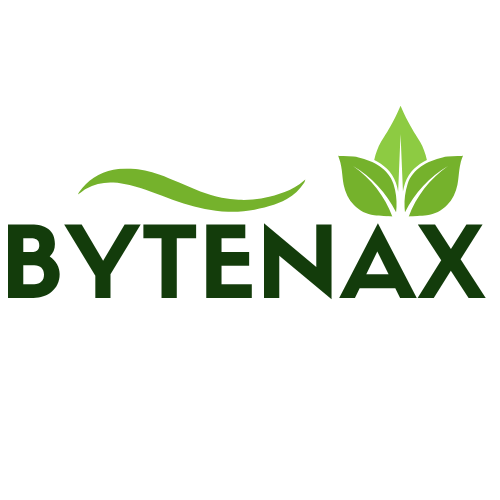Anúncios
Food analytics is a growing discipline that combines data analysis with food industry practices. Businesses utilize this approach to improve decision-making, enhance the customer experience, and drive profitability.
By tracking trends and preferences, companies can gain valuable insights into their operations. These insights empower stakeholders, from suppliers to consumers, to make informed choices.
In a holistic sense, understanding food analytics can transform how organizations operate, optimizing supply chains, product development, and marketing strategies. This article will explore the essential components of food analytics.
What is Food Analytics?
Food analytics involves using data tools to interpret information related to food production, distribution, and consumption. It offers insights into market trends and consumer preferences.
This process encompasses everything from supply chain metrics to customer feedback. By analyzing these elements, businesses can tailor their offerings and improve efficiency.
Anúncios
Organizations track specific key performance indicators (KPIs) to gauge their success. These metrics can include sales figures, customer satisfaction rates, and food safety compliance.
Food analytics helps companies remain competitive by allowing them to identify emerging trends quickly. Predictive analytics can forecast consumer behaviors and adapt strategies accordingly.
In essence, food analytics serves as the backbone of data-driven decision-making in the food industry. This foundational understanding drives innovation and growth.
Anúncios
The Importance of Data in the Food Industry
Data plays a critical role in shaping the food industry. Organizations must learn to harness data effectively to remain relevant in a competitive marketplace.
With the advent of technologies like IoT, businesses can now collect vast amounts of data from various sources. This influx of information presents both opportunities and challenges.
Data enables organizations to monitor inventory levels, predict demand, and manage supply chain disruptions. This capability is particularly crucial in minimizing food waste.
Moreover, analyzing customer preferences and behaviors enhances marketing efforts. Targeted campaigns improve the chances of product adoption and customer retention.
Ultimately, leveraging data effectively leads to better product innovation and increased operational efficiency. This trend underscores the necessity of robust data analytics frameworks.
Key Components of Food Analytics
Understanding food analytics involves knowing its key components. These elements include data collection, integration, analysis, and visualization.
Data collection methods vary, from surveys to digital monitoring systems. It’s essential to ensure data quality for insightful analysis.
Integration involves consolidating data from multiple sources, including sales, customer feedback, and supply chain metrics. A holistic view improves decision-making.
Analysis encompasses various techniques, including descriptive, diagnostic, and predictive analytics. Each provides unique insights tailored to business needs.
Finally, effective data visualization is critical. Clear graphical representations of data help stakeholders grasp complex information quickly, promoting informed discussions.
Benefits of Food Analytics for Businesses
Businesses stand to gain numerous advantages from embracing food analytics. Improved decision-making, increased efficiency, and enhanced customer experiences are just a few examples.
By leveraging insights, businesses can optimize their operations and reduce costs. This optimization can result in higher profit margins and sustainable growth.
Food analytics also fosters a better understanding of consumer preferences. This knowledge enables businesses to tailor their products to meet specific market needs.
Moreover, organizations can improve their marketing strategies. Targeting the right audience leads to higher engagement and conversion rates.
Overall, the advantages of food analytics are substantial. Companies that adopt these practices can navigate the complexities of the food industry effectively.
Challenges in Implementing Food Analytics
While food analytics offers numerous benefits, challenges do exist. Organizations may struggle with data collection, management, and analysis complexities.
Data privacy and security issues present significant concerns. Organizations must comply with regulations, ensuring customer information is adequately protected.
Moreover, integrating data from disparate systems can be challenging. Successful implementation requires a strategy that unifies all data sources effectively.
Staff training is another hurdle. Employees need the necessary skills to analyze and interpret data accurately, ensuring insights are actionable.
Ultimately, addressing these challenges is key to successfully leveraging food analytics. Organizations must stay consistent in their approach and commit to ongoing improvements.
Future Trends in Food Analytics
The future of food analytics appears promising, with several trends emerging. Advancements in artificial intelligence (AI) and machine learning (ML) are shaping the landscape.
AI-driven tools can provide deeper insights, automate data analysis, and refine predictions. This technological progress enhances operational capabilities and decision-making processes.
Furthermore, sustainability metrics are gaining importance. Consumers increasingly demand transparency regarding food sourcing, production methods, and environmental impact.
Additionally, real-time analytics will become more prevalent. Instant access to data allows businesses to adapt more quickly to changing market conditions.
Organizations that stay ahead of these trends will thrive. Embracing innovations in food analytics will significantly impact their long-term success.
Conclusion
Understanding food analytics is crucial for businesses looking to optimize their operations. By leveraging data effectively, organizations can make informed decisions that drive success.
From improving customer experiences to predicting market trends, analytics serves as an indispensable tool. Companies must remain adaptable and invest in data solutions.
As technology continues to evolve, the potential of food analytics will only expand. A commitment to understanding and utilizing this field will yield long-term benefits.
In summary, food analytics is more than a trend; it is a necessary component of modern business strategy. Embracing this approach is key to navigating the food industry.
| Component | Description |
|---|---|
| Data Collection | Gathering information from various sources like sales, inventory, and customer feedback. |
| Data Integration | Consolidating data from multiple platforms to create a comprehensive overview. |
| Data Analysis | Utilizing techniques to interpret the collected information effectively. |
| Data Visualization | Representing data in graphical formats for clarity and better understanding. |
- Improved decision-making
- Increased operational efficiency
- Enhanced customer experiences
- Better targeting in marketing efforts
- Sustainable growth and profitability



